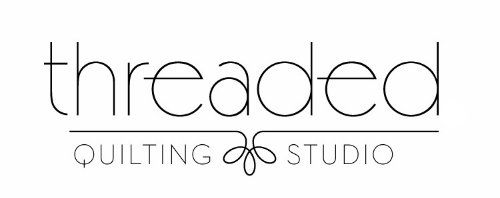If you'll notice (I didn't at the time), this isn't as good of a deal financially speaking, only getting about 13 pages to the dollar. I used the standard 40% off Hobby Lobby coupon for a higher priced item and therefore didn't get a discount on this tracing paper. One product I may try in the future is this newsprint on Amazon Prime. It has pretty great reviews for foundation paper piecing. Delivery included is a big plus for this store-avoider. At the time of this posting, the price of the newsprint would yield over 30 pages to the dollar AND I wouldn't have to cut it down to size.
Back to the tracing paper: When I got it home and tried printing a block on it, it performed miserably in my printer. Like, none of the pages I attempted would go through without getting mangled beyond belief.
I did a little bit of legwork so that I could still use this tracing paper. I ironed it to the waxy side of freezer paper to give it more body, cut it down to 8.5" x 11" size, put it in my printer tray (one at a time) and it printed beautifully! I could use the freezer sheets more than once, re-pressing them to new sheets of tracing paper and putting them in my printer tray.
Only later did I discover that my laser printer (not an inkjet printer, BTW) has a manual tray for feeding sheets one at a time. This is different than putting a single sheet into the paper tray (which is what I had been doing). I tried the manual tray with much hope, but alas, I did not get a single sheet to print without wrinkling it beyond use.
But I didn't give up! On a whim, I placed a regular piece of paper behind a single tracing paper and fed them through the manual feed at the same time. Remarkably, it worked! I'll be totally honest that in my experience thus far, I've had about 75% success with this method. Occasionally, it doesn't work. I found that with my printer—which is a Brother DCP-7065DN—I had to use a new, "unused" sheet of printer paper as the "backer" each time. After it went through once, the paper developed a slight bend to it (or maybe it's static electricity?) that prevented a successful second pass through the printer with a new tracing paper.
So all in all, is this method SUPER-temperamental? Yes. Perfect? Heck no. Worth a shot in order to not waste this dadgum tracing paper? I think so! Plus, it's pretty exciting while you're waiting to find out if it'll work! :) The suspense = PRO!





















